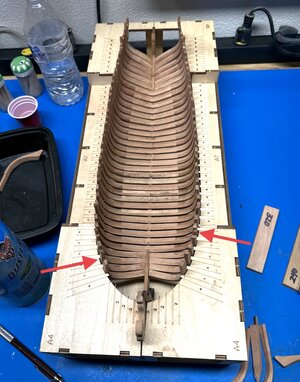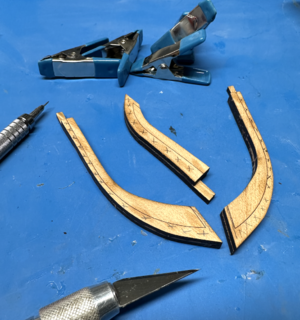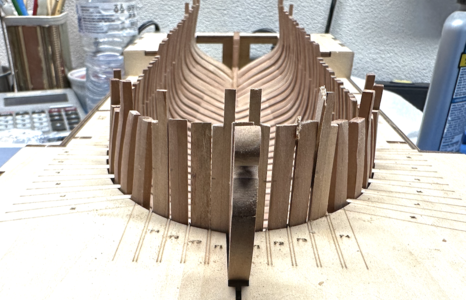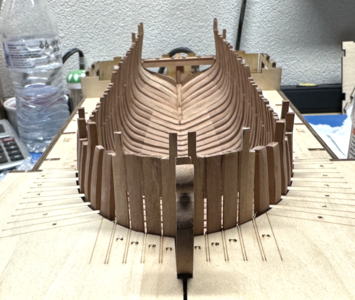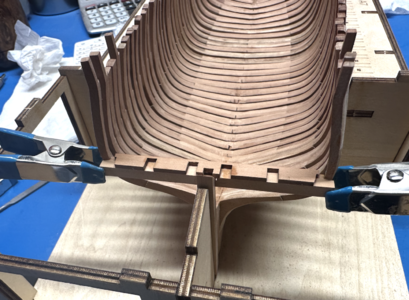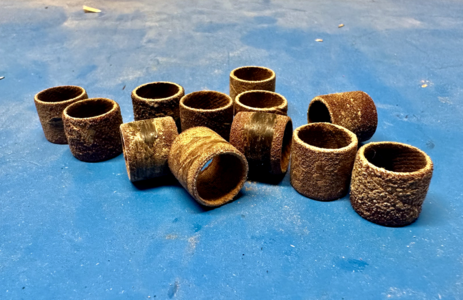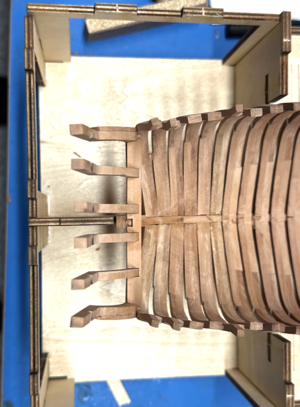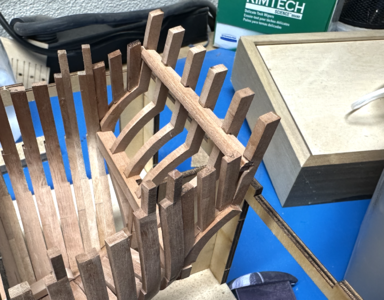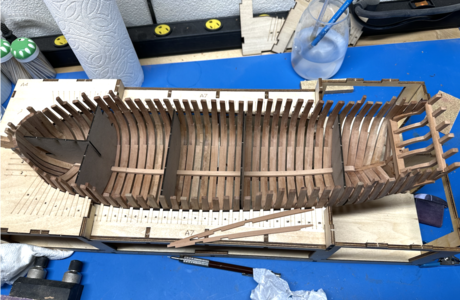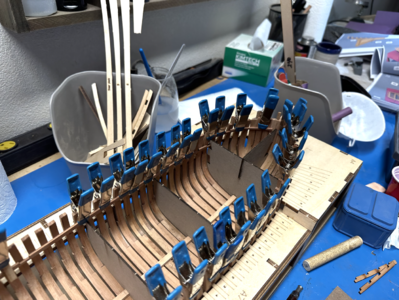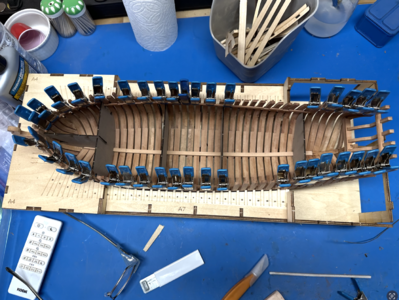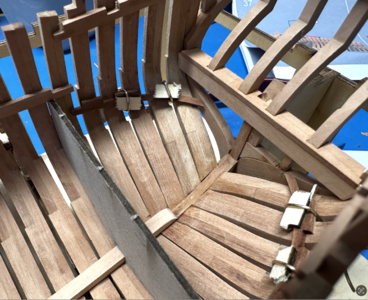Thanks for all the likes, guys! It's very encouraging. I'm working hard on this one and hope to keep the progress coming.
I'm still not getting the F5/furtherest out timber. The part after beveling isn't even close to a fit. Once again, I can see errors adding up, but this isn't even close and the building jig should have made up for some errors.
The results are sad. I also have David Antscherl's book on Hayling Hoy. I was originally thinking of trying a truly scratch build, but when the book opened up with no building board, keel, or frame contruction, and simply referring to the highly aspirational The Fully Framed Model series instead, I came back to reality. The construction of the two models is completely different, but it gives me some idea of what things should/could look like and some building tips. One gem I found is a way to handle that pesky last timber. The book points to not being able to handle and test fit that piece as it's shaped and applies it as partially shaped.
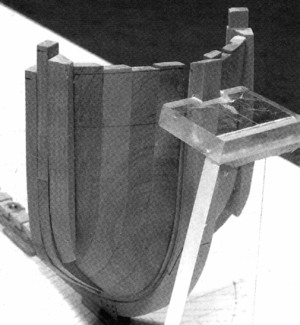
Sorry, didn't ask permission to use this one image, but hopefully they sell a few copies of the book because of this inclusion.
The piece is partially shaped and then attached. This way it can be shaped in place. With a building jig, I'll have to wait for a while to get this on there. I didn't see a step that attaches the wale before taking it out of the jig. Worse comes to worse, I can remove that section of the jig and get the piece on after the hull has been stabilized with the breast hook, clamps, and more.
I did cut myself a couple more pieces per. I'll try it the way it's implied to be done once more, but I have a plan if they just end up looking like junk.
I'm still not getting the F5/furtherest out timber. The part after beveling isn't even close to a fit. Once again, I can see errors adding up, but this isn't even close and the building jig should have made up for some errors.
The results are sad. I also have David Antscherl's book on Hayling Hoy. I was originally thinking of trying a truly scratch build, but when the book opened up with no building board, keel, or frame contruction, and simply referring to the highly aspirational The Fully Framed Model series instead, I came back to reality. The construction of the two models is completely different, but it gives me some idea of what things should/could look like and some building tips. One gem I found is a way to handle that pesky last timber. The book points to not being able to handle and test fit that piece as it's shaped and applies it as partially shaped.

Sorry, didn't ask permission to use this one image, but hopefully they sell a few copies of the book because of this inclusion.
The piece is partially shaped and then attached. This way it can be shaped in place. With a building jig, I'll have to wait for a while to get this on there. I didn't see a step that attaches the wale before taking it out of the jig. Worse comes to worse, I can remove that section of the jig and get the piece on after the hull has been stabilized with the breast hook, clamps, and more.
I did cut myself a couple more pieces per. I'll try it the way it's implied to be done once more, but I have a plan if they just end up looking like junk.




